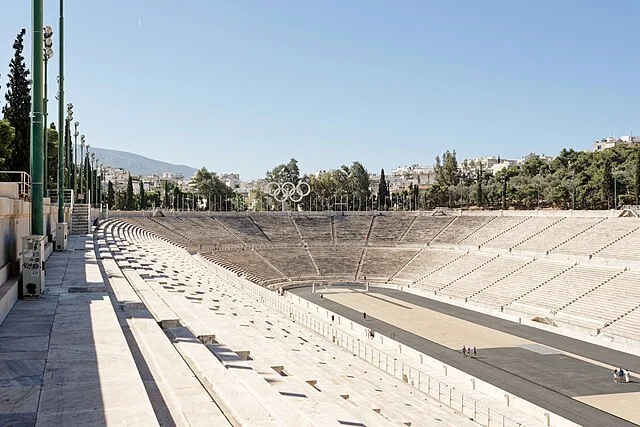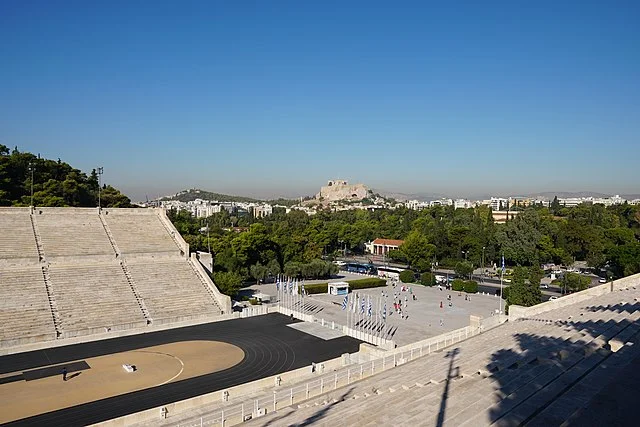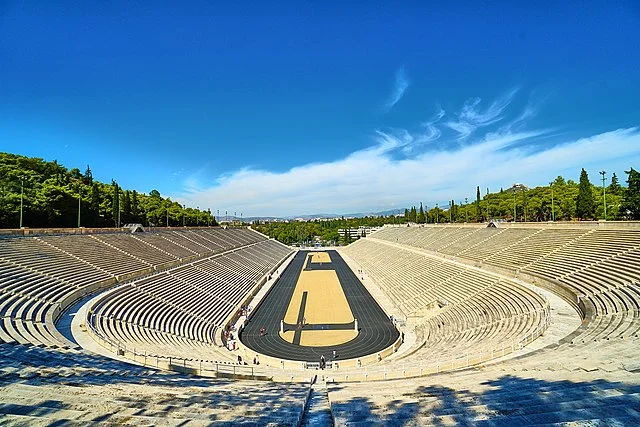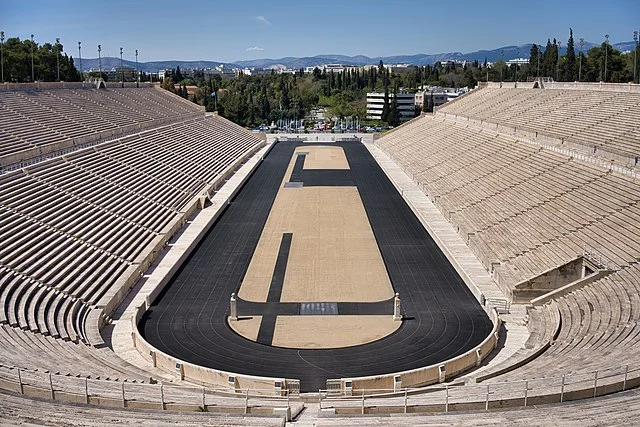The Panathenaic Stadium, located in Athens, Greece, is a significant historical site. It originally hosted the Panathenaic Games in 566 BC. These games were a major religious and athletic festival in honor of the goddess Athena. The stadium’s design reflects the ancient Greek ideals of athletic competition and civic pride.
Get your dose of History via Email
Historical Background

The original stadium, built in 566 BC, underwent significant renovations in the 4th century BC. It was constructed from limestone and could accommodate about 30,000 spectators. The stadium’s layout featured a U-shaped track, typical for Greek athletic events.
In 144 AD, the Roman emperor Herodes Atticus renovated the stadium. He replaced the original stone with marble, enhancing its grandeur. This renovation included the addition of seating and other facilities, making it one of the most impressive venues of its time.
Modern Revival

In 1896, the Panathenaic Stadium hosted the first modern Olympic Games. This marked a significant revival of interest in ancient sports. The stadium served as the main venue for athletics, showcasing various competitions. It has since been recognized as the only stadium in the world built entirely of marble.
The 1900, 2004, and 2020 Olympics included events at the stadium. Today, it remains a popular tourist destination and a symbol of Greece’s athletic heritage.
Architectural Features

The Panathenaic Stadium measures approximately 204 meters in length and 33 meters in width. Its seating arrangement includes 50 rows of marble seats, providing excellent visibility for spectators. The track itself is about 40 meters wide, allowing for various athletic competitions.
The design of the stadium reflects the ancient Greek architectural style. The use of marble not only adds beauty but also signifies the importance of the venue. Additionally, the stadium features a series of arches and columns that enhance its aesthetic appeal.
Cultural Significance
The Panathenaic Stadium holds cultural significance beyond its architectural features. It represents the ancient Greek values of competition, excellence, and honor. The Panathenaic Games were pivotal in promoting unity among Greek city-states.
Furthermore, the stadium symbolizes the revival of the Olympic spirit in the modern era. Its role in hosting the first modern Olympics links it to both ancient traditions and contemporary sporting culture.
Conclusion
In summary, the Panathenaic Stadium is a remarkable historical and architectural site. Its rich history spans over two millennia, reflecting the evolution of athletic competition in Greece. Today, it serves as a testament to the enduring legacy of the Olympic Games and ancient Greek culture.
Source:

